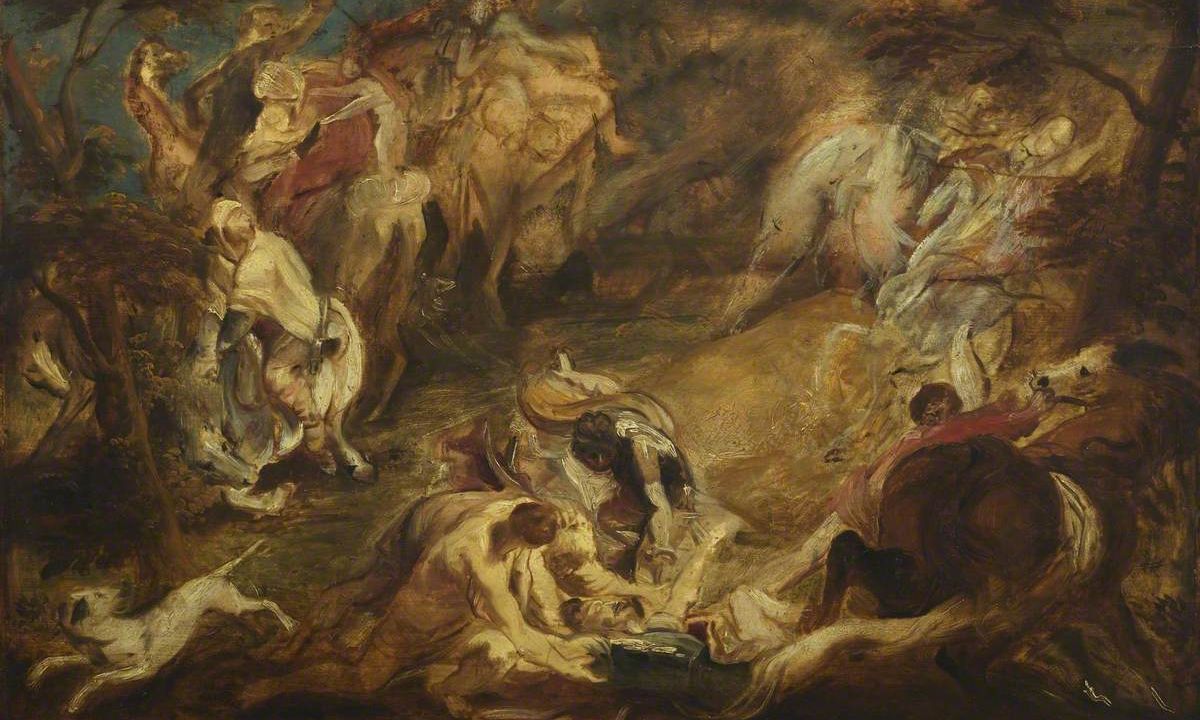One of the disputed works: The Conversion of Saint Paul (1610-12). Housed at London's Courtauld Gallery
Photo: Art UK via Wikimedia
Three paintings by Peter Paul Rubens will stay in Britain after the UK Spoliation Advisory Panel ruled that the trio of works should remain with their current owner, the Courtauld in London. The works were once owned by the German banker, Franz Wilhelm Koenigs; a spokesperson for the Courtauld says that the three works are "owned by the Samuel Courtauld Trust and cared for by the Courtauld Gallery".
Parliament's Spoliation Advisory Panel, which rules on the ownership of disputed works of art, rejected claims from three separate parties for the Rubens pieces, including Koenigs’s granddaughter, Christine Koenigs.
The disputed works are: St Gregory the Great with Ss Maurus and Papianus and St. Domitilla with Ss Nereus and Achilleus (1606-07); The Conversion of St. Paul (1610-12); The Bounty of James 1 Triumphing Over Avarice, for the ceiling in the Banqueting House, Whitehall (around 1632).
The spoliation advisory panel report, published 18 March, explains the provenance of the works, saying that the three paintings were part of an important collection of drawings and paintings accumulated by Koenigs.
In 1931, Koenigs transferred most of his collection to the Lisser & Rosenkranz bank in Hamburg to secure a loan. In 1935 he transferred 47 paintings, including the three Rubens pieces, to the bank as security for a further loan.
Paul Peter Rubens's Bounty of James I Triumphing over Avarice (around 1633)
Photo: Art UK via Wikimedia Commons
Meanwhile in 1935, Koenigs loaned long-term his drawings collection, along with several paintings, to Museum Boymans, now the Museum Boijmans van Beuningen, in Rotterdam. “The collection, while security for his debt, had been loaned by Franz Koenigs to the Boijmans,” the panel report says.
The bank moved to the Netherlands in the wake of the Nazi uprising and went into voluntary liquidation in 2 April 1940—a little over a month before the Nazi invasion of the country. The bank subsequently sold the three paintings to Count Antoine Seilern who brought them to England after the war, later bequeathing them to the Courtauld Institute as the Princes Gate collection.
The claimants in the current case are Christine Koenigs on behalf of herself and seven out of 13 of the heirs of Franz Koenigs. Crucially, “Koenigs lodged a different claim on behalf of herself and seven out of thirteen of the heirs of Franz Koenigs in his capacity as holder of 2.4% of the shares in the [Lisser & Rosenkranz] bank,” the report adds.
Gal Flörsheim—as sole heir of Salomon Jakob Flörsheim who was one of the bank’s main shareholders—also lodged a claim. Flörsheim also claimed in his capacity as a recently appointed liquidator of the bank together with another co-liquidator, Eyal Dolev.
“The panel concluded that the claimants had neither a legal nor a moral claim to the three paintings and that the works should continue to be enjoyed in a public museum in line with the wishes of Franz Koenigs,” the report says.
“The panel does not consider that the grandchildren of Koenigs, who himself pledged the paintings initially as security, and who intended them ultimately to remain at the museum, could ever have had a superior moral claim to the paintings than that of the Courtauld, who hold them for the public benefit and received them from a man who paid a fair value for them,” the report adds.
Peter Paul Rubens's St Gregory the Great with Ss Maurus and Papianus and St. Domitilla with Ss Nereus and Achilleus (1606-07)
Photo: Art UK
The works have been caught up in a long-running ownership dispute. Christine Koenigs also tried to recover the three works in 2007 when the UK Spoliation Advisory Panel asserted, in rejecting her claim, that Franz Koenigs had given the paintings to the Lisser & Rosenkranz Bank as collateral for a loan.
The Courtauld said at the time that Koenigs lost the right to the works when the bank went into liquidation days before the Nazi invasion of the Netherlands on 10 May 1940, arguing that it was an economic decision to offload the works rather than the result of war. In 2007 the panel said that Koenigs lost the works “because of business/economic reasons and not because of the actions of the Nazis”.
“This is the fifth occasion on which claims relating to the three paintings, or relevant to those claims, have been considered by restitution panels either in the United Kingdom or in the Netherlands,” the recent spoliation advisory panel report says.
In 2003, the Dutch government’s advisory committee on the assessment of restitution applications for items of cultural value and the Second World War—known as the DRC committee—rejected Christine Koenigs’s claim.
“On 13 June 2022, the DRC rejected [another] claim made by Ms Koenigs in the same capacity as she and Mr Flörsheim now advance their claims, namely as heirs to shareholders in the bank,” the report adds. At the time of writing, Christine Koenigs could not be reached for comment.
UPDATE: 1. The article was amended to include updated information about the ownership of the works by the Samuel Courtauld Trust.
2. The image of The Conversion of St. Paul (1610-12) was replaced with the correct work.
3. Christine Koenigs tells The Art Newspaper: "The UK Parliamentary Panel refuses to restitute [the three Rubens works] even though Seilern smuggled them without the necessary papers into England."

